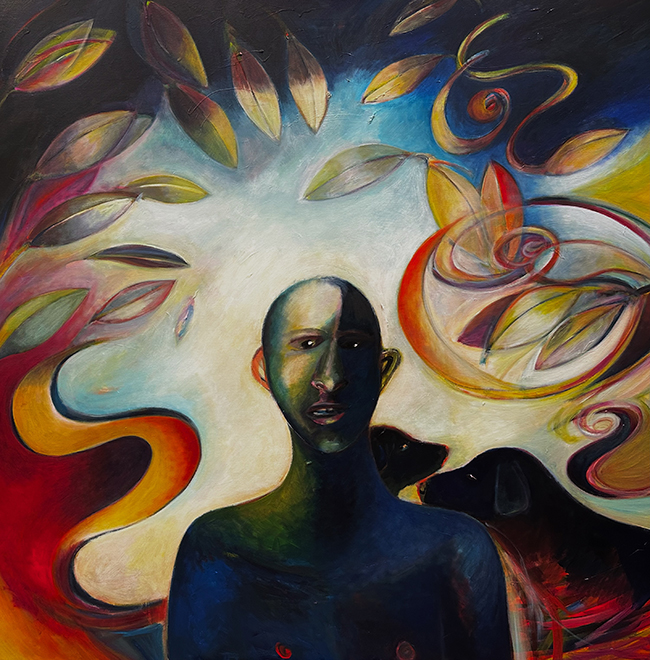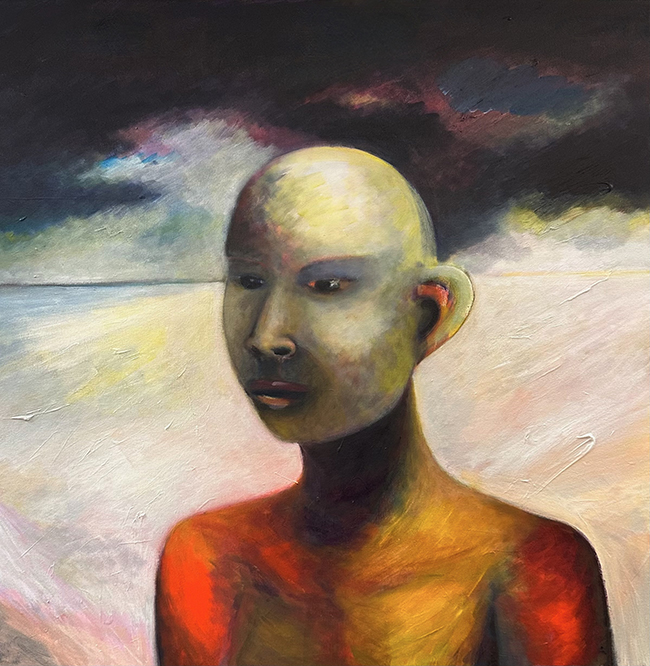Judy Gittelsohn’s art isn’t just about colors on canvas; it’s a tapestry woven from the threads of memory, family, and the profound symbolism of life. Born in the picturesque landscapes of Portland, Oregon, Gittelsohn has spent her life capturing the essence of her experiences through vibrant acrylic strokes.
Growing up amidst the sprawling embrace of family in Oregon, Gittelsohn’s childhood was akin to a bustling community within itself. With grandparents, cousins, and extended family sharing the same space, her upbringing was imbued with a sense of togetherness and shared memories. These formative years, spent swimming in a communal pool and gathering at a family beach house in Cannon Beach, laid the foundation for Gittelsohn’s artistic journey.
After studying architecture at the University of Oregon and immersing herself in the vibrant creative scene of San Francisco, Gittelsohn found her calling as a painter. Her involvement in bands during the city’s punk era and her entrepreneurial ventures, including co-owning a maternity clothing company, added layers to her multidimensional persona. In 2007, she founded Art For Well Beings, a studio committed to making art accessible to people with special needs. Gittelsohn’s art explores the relationships between color, form, and symbolism, allowing her work to transcend ordinary boundaries and speak to deeper human experiences.

Greg In His Garden
“Greg In His Garden” is a perfect example of Gittelsohn’s ability to merge the tangible with the symbolic. The painting depicts Greg as the central figure in a swirling, almost otherworldly scene. There’s a sense of stillness in his posture, yet the world around him moves with fluidity and energy. It speaks to the human experience of finding peace and strength within the chaos of life.
Gittelsohn uses color here to emphasize that balance. Greg is bathed in warm, earthy tones, suggesting a deep connection to the land and life’s grounding forces. The surrounding elements—angels, nature, and the turning earth—are painted in brighter, more ethereal colors, hinting at the spiritual and unseen forces that play a role in everyday existence. The juxtaposition between these colors creates a sense of harmony, suggesting that while the world may be in constant motion, there are always moments where everything aligns.

Electricity of Coincidence
In “Electricity of Coincidence,” Gittelsohn delves into the magical nature of chance encounters. This work captures the fleeting moments when people’s lives intersect, creating brief but powerful connections that remind us of our shared humanity. The painting is charged with energy, as the title suggests, using vibrant, electric colors to convey the intensity and vitality of these moments.
The composition reflects this sense of unexpected unity. Elements that would normally seem separate and distinct—like figures, lines, and shapes—come together in surprising ways, forming an interconnected whole. This echoes Gittelsohn’s broader artistic philosophy: life is full of moments where everything suddenly fits, even when the world around us feels disconnected. The use of bold, intersecting lines and contrasting colors creates a dynamic tension, as if the painting itself is alive with the possibility of change.
Gittelsohn’s handling of this subject matter shows her belief in the beauty of unpredictability. “Electricity of Coincidence” is not just about chance meetings, but about the magic that emerges when disparate elements come together to form something larger than the sum of their parts.

Portrait of a Doctor as a Young Woman
“Portrait of a Doctor as a Young Woman” is perhaps Gittelsohn’s most personal exploration of transformation and growth. The young woman in the painting stands at a threshold—both literally and figuratively. She’s poised on the edge of a journey, about to step into her role as a healer. Around her, the world seems uncertain. The ground shifts, the sky darkens, and yet, she faces forward with determination and clarity.
Gittelsohn captures the inner strength of her subject through a simple, focused composition. The young doctor is the clear focal point, painted with strong, confident lines and colors that radiate resolve. In contrast, the world around her is painted with looser, more chaotic strokes, underscoring the challenges and unpredictability of the path she’s chosen. The storm looming behind her doesn’t frighten her; instead, it seems to push her forward, urging her to embrace her calling.
The painting’s strength lies in its simplicity. It doesn’t rely on elaborate details or complex symbolism. Instead, it communicates its message through the contrast between the calm, composed figure of the doctor and the turbulent world around her. It’s a testament to Gittelsohn’s ability to convey deep meaning through minimalism, using color and form to explore themes of growth, responsibility, and the resilience needed to navigate life’s challenges.
Judy Gittelsohn’s work is a journey through the complexities of life, symbolizing the connections between the individual and the world, the seen and unseen, the past and future. Through her art, she invites viewers to reflect on their own experiences, encouraging them to find balance, embrace uncertainty, and recognize the beauty in moments of coincidence.

